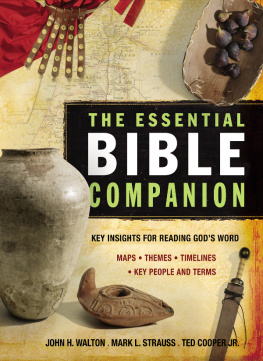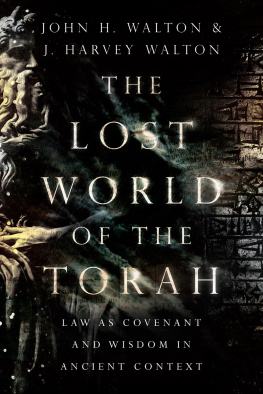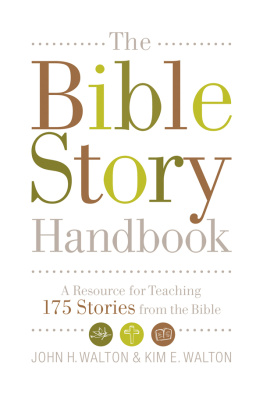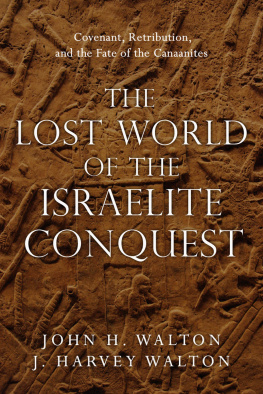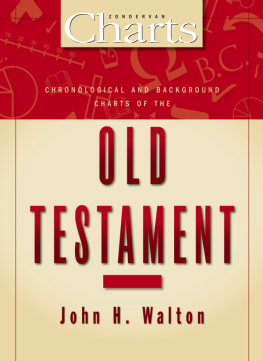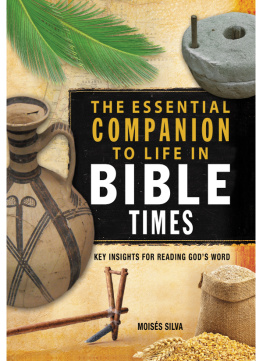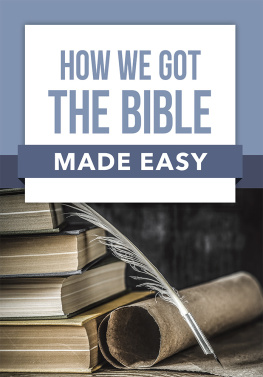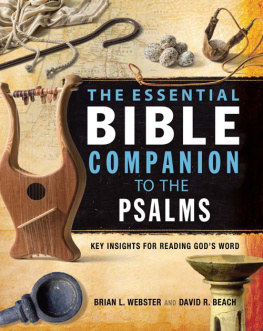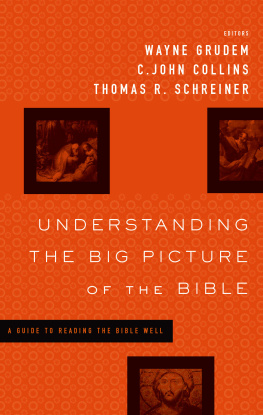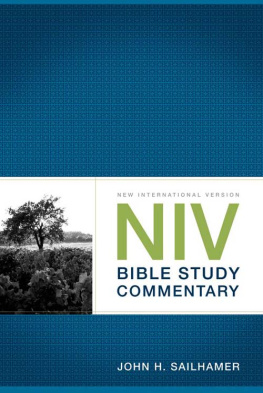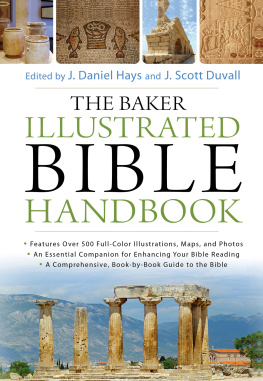Also Available:
The Bible in 90 Days curriculum
ZONDERVAN ACADEMIC
The Essential Bible Companion
Copyright 2006 by Theodore W. Cooper Jr., John H. Walton, and Mark Strauss
Requests for information should be addressed to:
Zondervan, 3900 Sparks Dr. SE, Grand Rapids, Michigan 49546
ePub Edition April 2020: ISBN 978-0-3103-0326-8
Library of Congress Cataloging-in-Publication Data
Walton, John H., 1952
The essential Bible companion / John H. Walton and Mark L. Strauss. 1st ed.
p. cm.
ISBN -13: 978-0-310-26662-4 (softcover)
1. Bible Introductions. I. Strauss, Mark L. II. Title.
BS475.3.W35 2005
220.61 dc22 2005010113
Temple cutaways by Mosaic Graphics. Copyright 2006 by Zondervan.
The authors kindly acknowledge the work of Melissa Moore in the creation of the glossaries and Liz Klassen for help in the editing.
All Scripture quotations, unless otherwise indicated, are taken from The Holy Bible, New International Version, NIV . Copyright 1973, 1978, 1984 by Biblica, Inc . Used by permission of Zondervan. All rights reserved worldwide. www.Zondervan.com. The NIV and New International Version are trademarks registered in the United States Patent and Trademark Office by Biblica, Inc .
No part of this publication may be reproduced, stored in a retrieval system, or transmitted in any form or by any means electronic, mechanical, photocopy, recording, or any other except for brief quotations in printed reviews, without the prior permission of the publisher.
Any internet addresses (websites, blogs, etc.) and telephone numbers in this book are offered as a resource. They are not intended in any way to be or imply an endorsement by the publisher, nor does the publisher vouch for the content of these sites and numbers for the life of this book.
Interior design: Tracey Walker
Maps: International Mapping
19 20 21 22 23 24 25 / WBC / 42 41 40 39 38 37 36 35 34 33 32 31 30 29 28 27 26 25 24 23 22 21 20 19 18 17 16 15 14 13
Information about External Hyperlinks in this ebook
Please note that footnotes in this ebook may contain hyperlinks to external websites as part of bibliographic citations. These hyperlinks have not been activated by the publisher, who cannot verify the accuracy of these links beyond the date of publication.
F amiliarity with the Bible has been largely lost to the church. For the most part, we believe that this is true because people dont have time to read it, and when they do, they simply dont know what to do with it. Many people desire to know Gods Word, but feel that they are groping blindly as they seek to figure out how to make Scripture relevant to their lives. Often the Old Testament is presented as if it were a haphazard collection of moralistic lessons or endless lists of names and dates. The New Testament may seem more directly applicable to Christians today, but still much of it seems alien. What are we to make of references to phylacteries and tassels (Matt. 23:5)? And what of commands to greet one another with a kiss of love (1 Peter 5:14), or which forbid women from wearing pearls or braided hair (1 Tim. 2:9)? And what about all those strange and puzzling images in the book of Revelation? We want to obey the Bible, but dont know quite how it applies. We read and study the Bible, but our effort often leaves us empty and yet mystified about how its power works in our lives.
For many, their experience with the Bible is similar to the piata game. A target is out there, but they are blindfolded and have been turned around so many times that they are entirely disoriented and dont know where to aim. They flail wildly at the air and become frustrated with an exercise that offers so little return for their effort. In this book we want to remove the blindfold, and point you, the reader, in the right direction.
Our goal is to go beyond basic Bible content to help you know its meaning and just what you are supposed to do with it. We hope that this approach will remedy the all-too-frequent caricature of the Old Testament as little more than endless trivia, irrelevant history, and obscure prophecies only alleviated by some comforting psalms and models for living from the heroes and heroines of the faith; and that the New Testament narratives, letters, and prophecies are neither simple moral codes (which can all be applied directly to your situation) nor dry and dusty history. They are rather our history, the story of how God revealed himself in the person of Jesus Christ to men and women of faith our spiritual ancestors, and how these followers of Jesus launched the greatest movement in human history. You will be impressed with the way that the Bible uniquely reveals the God of the universe. That is the purpose of the Bible. These 66 books do not contain simply human ideas and experiences of God. They contain Gods revelation of himself. When you read its pages, you encounter God himself.
In The Essential Bible Companion, you will gain not only an appreciation for the central importance of this sacred text, but in doing so will come to appreciate the literature, theology, and history for the contribution they make and the role that they play in the greater story of Gods plan for reconciling his creation to himself, restoring his presence in his creation, and forging a relationship with his people.
What Is the Bible All About?
T he Bible is all about connecting with God. Three key words will help us to get the big picture: Presence, Revelation, and Relationship. Everything God does in the Bible shows us that he deeply desires to be in relationship with us. That is why he created us. When we love someone, as God loves us, we want to be with that person. But being in the presence of a loved one is only one part of what is essential to a relationship. The other main ingredient is that we desire to know the other person as fully as we can. This is where the concept of revelation comes in. Being together with a loved one provides the opportunity to get to know one another, so that the relationship can grow.
Across the pages of the Bible God is building relationship with his people as he reveals himself to us. Seven stages of Gods presence show us this process through the Old and New Testaments. A brief look at them will help us to have a framework that we can use as we read through the Bible.
The Garden of Eden
When God created us he made this world to be like a temple. A temple in the ancient world was where God lived. So we would say that he built this world as a place to live not because he needed a place to live, but because his plan was to create people to live with him here. The work of the Spirit of God in Genesis 1:2 shows his presence even in the initial stages of creation, until Eden was established as the first place of Gods presence. Adam and Eve were put in Eden to be with God and in relationship with him. Unfortunately, the path of disobedience led to the rupture of the relationship and the loss of access to Gods presence. Genesis 4:26 reports that people began to call on the name of God an indication that they were invoking his presence because they realized what they had lost. The builders of the Tower of Babel were attempting to recover Gods presence by providing a stairway for him to descend and be worshiped. But this human initiative was based on distorted ideas of God, and therefore it failed.
The Covenant
Gods initiative to reestablish his presence and relationship came through the covenant that he made with Abraham (Gen. 12). Through Abraham and his family all the nations of the world were to be blessed, because through them he would reveal himself (so that people could know him) and make relationship possible again.

